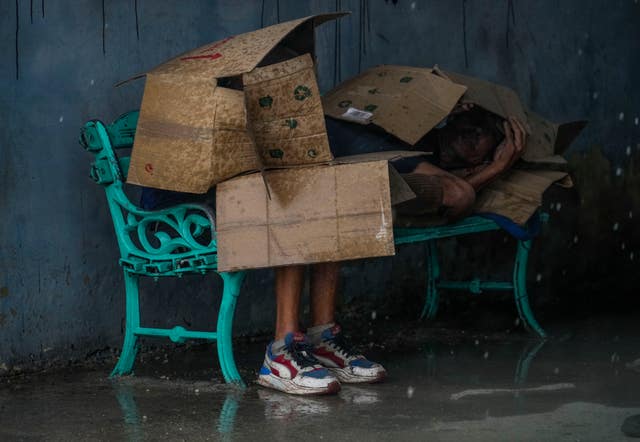
Hurricane Rafael weakened into a tropical storm Friday as it swirled through the Gulf of Mexico where it was expected to break apart after ploughing through Cuba.
The storm knocked out the island’s power grid with hundreds of houses collapsing.
On Friday night, the tropical storm was located 240 miles north of Progreso, Mexico. It had maximum sustained winds of 70mph and was moving west-northwest at 5mph, according to the National Hurricane Centre in Miami.
Rafael was forecast to move westward toward Mexico in the coming days and forecasters warned that swells from the hurricane were likely to cause “life-threatening surf and rip current conditions”.

Mexico’s government on Friday warned of powerful rain, winds and waves up to eight feet (2.5 metres) in the Campeche, Quintana Roo and Yucatan states in the coming hours, asking citizens to take care.
Forecasters said they expected the storm to weaken and “meander” over the centre of the Gulf through early next week.
The hurricane tore through Jamaica and the Cayman Islands earlier in the week, knocking out power and fueling mudslides. On Wednesday evening, it hit Cuba, causing yet another headache for the island.
Rafael’s fierce winds knocked out Cuba’s electric grid, forced the evacuation of 283,000 people and collapsed 461 homes. It also left trees, power lines and rubble strewn across flooded streets.
On Friday, the Cuban government said it was able to restore power to approximately 143,000 homes in Havana, although many people were still without power.
Rafael followed a rocky few weeks in the Caribbean nation.
First, it was hit by island-wide blackouts stretching on for days, a product of the island’s energy crisis. Shortly after, it was hit by a powerful hurricane that struck the eastern part of the island and killed at least six people.


Why are you making commenting on The National only available to subscribers?
We know there are thousands of National readers who want to debate, argue and go back and forth in the comments section of our stories. We’ve got the most informed readers in Scotland, asking each other the big questions about the future of our country.
Unfortunately, though, these important debates are being spoiled by a vocal minority of trolls who aren’t really interested in the issues, try to derail the conversations, register under fake names, and post vile abuse.
So that’s why we’ve decided to make the ability to comment only available to our paying subscribers. That way, all the trolls who post abuse on our website will have to pay if they want to join the debate – and risk a permanent ban from the account that they subscribe with.
The conversation will go back to what it should be about – people who care passionately about the issues, but disagree constructively on what we should do about them. Let’s get that debate started!
Callum Baird, Editor of The National
Comments: Our rules
We want our comments to be a lively and valuable part of our community - a place where readers can debate and engage with the most important local issues. The ability to comment on our stories is a privilege, not a right, however, and that privilege may be withdrawn if it is abused or misused.
Please report any comments that break our rules.
Read the rules here